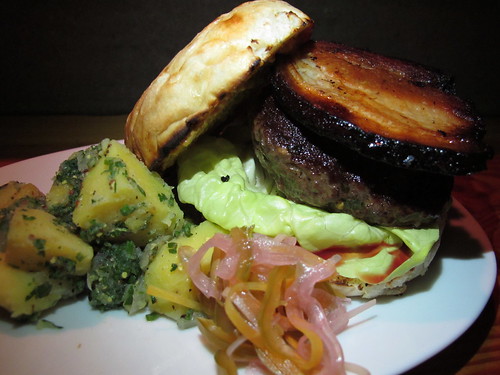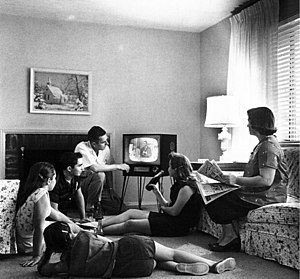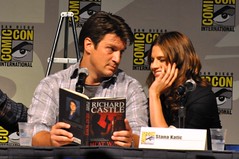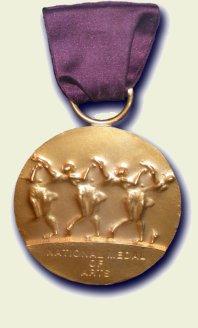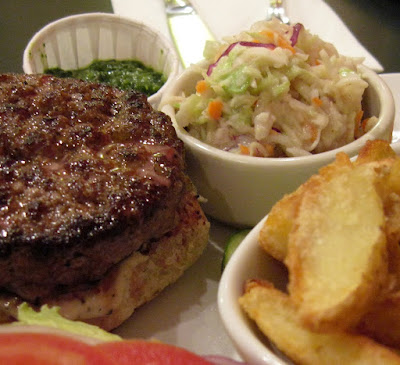Anyone over thirty knows deeply the problems with broadcast television. In the dark ages before Tivo, before the Internet, yes even before DVDs and VHS, civilization made do with watching whatever was programmed by the networks. This meant living with the whims of the network executives, where niche shows such as Star Trek were canceled after entertaining only 22% of the TV audience, about the same share as American Idol gets today. Advertisers were king, and viewers had to beg for worthwhile shows. If it turned out there was an interesting show to watch, it meant organizing your schedule around the TV schedule, because in broadcast TV there were no second chances (except perhaps during summer reruns).
But, there were good things about life during broadcast. I remember as a kid watching the
Brady Bunch
or
Happy Days
, and the next day at school all my friends had seen the same show. We had a shared experience, and nearly every kid in school had suffered Marcia's broken nose at the same time, or watched
Fonzie try to jump 14 garbage cans on his motorcycle.
"Specials" were truly special events, such as the
Frosty The Snowman
Christmas show on CBS, which wasn't guaranteed to ever show on TV again. Who can forget the exciting music introducing it, beckoning you into the living room to stare at the TV?
In a similar way, there was something comforting about the timeslots for family hour and Saturday morning cartoons. The paternalist networks felt that 8pm was an appropriate time for the family to share an hour before the flickering lights before the kids go to bed, in a tradition that probably stretches back to the campfires of our primitive ancestors. Meanwhile,
Saturdays
were a legitimate excuse for kids to consume mass amounts of sugary cereal paired with limited animation and ads for Mattel toys. Yes, broadcast TV had some good points.
All of these thoughts ran through my mind while watching the half-time show for Superbowl XLV. No, it wasn't Will.i.am's glowing headgear that made me think of sugary cereal. But here is a modern broadcast event that carries all the best baggage of the past: a one-time special event that many schedule their life around, a shared experience, a chance for the family to get together, as well as an excuse to consume massive amounts of Fritos and bean dip with a buffalo-wings back. And the toys? Well, I guess the car commercials could count for those. But what held my attention the most wasn't exactly on the TV screen.
While I watched Slash and Fergie battle for that "Sweet Child o' Mine" I also followed along with the chatter on twitter. Not only did the performers kick off their
own perspective on the event, but twitterers across the country provided their own color commentary, snide remarks, and general riffs on the
Zeitpunktgeist.
Here, for example, are some saved tweets:
acarvin Andy Carvin That was fast. RT @
corbett3000: Ha! there’s already a @
groupon spoof ad of a flaming protester: http://bit.ly/dVjILj This could get ugly.
slhamlet Wagner James Au That Groupon commercial may actually inspire the Dalai Lama to give up a lifetime of non-violence to kick the CEO in the nuts.
copyblogger Brian Clark The Chrysler ad worked because of an emotional premise bigger than the product – the salvation of a city and its prodigal son.
Fun, but not exactly Pulitzer writing. So, why is this interesting? Because it answers the question: "Why watch broadcast TV?" When watching and reading the twitterstream in real-time you can participate in a shared event, something that can't be time-shifted, and experience something special as you kibitz with others.
"But the Superbowl is huge," you say. "It's a massive monolith, like in that
Stanley Kubrick 
movie."
True, but we know from experience that the future of mass media will be an ever-splintering market. No matter how huge the show may be, others will be watching something else. So, let's look at another example: "Castle."
"Castle," the cop procedural show with Nathan Fillion and Stana Katic as writer Richard Castle and detective Kate Beckett, was a fairly popular show the first two seasons, ranking 35th and 30th, before dropping to around the 50th most popular show in the third season. Yet, if you watch this 10pm show while
following along on twitter you'll find the Superbowl phenomenon once again
sulien77:
Tonight's #Castle may be a rerun, but it's just as good the second time through. Love this show!
The same thing happens for Chuck, a show which was reprieved from cancellation due to an active internet buzz by fans.The key thing is that if the networks recognize this and nurture it, they may be able to extend the life of broadcast TV, maybe even grow it. Maybe with digital TVs the twitter feed could be included as optional closed caption text. Think of it like VH1's pop-up videos, except everyone is offering their version of the pop-up dialogue.
There are many ways the networks could ruin it. For one, they could continue being monolithic. Part of the fun of the twitterstream is that it's democratic, and optional. You can ignore who you want to ignore. If the networks tried to lead viewers, or inject advertising into the feed, or pose as fake viewers... that would be a nail in the coffin.
A bad technical decision would be to institutionalize twitter as the platform for this conversation. Twitter is just one option, and with the speed of internet companies, it might not last as long as broadcast TV. It would be like saying that AOL is the Internet, which I hope everyone knows by now is not true. The TV networks should invest in expanding the base for these sorts of messages, without co-opting it.
And, the best way to ruin broadcast TV is to keep doing what they're doing: ignoring the new internet platform, and instead working on developing ever-cheaper lowest-common-denominator reality and game shows. In that model, there's nothing special, nothing is an event, and I, for one, don't want to participate in that shared experience.
 Cover of Peter FramptonAccording to Wikipedia, tao is a Chinese word meaning 'way,' or 'path.' It seems somehow appropriate to apply this to 70's wunderkind rocker Peter Frampton, who was never known for his lyrics, but really wanted you to show him the way. In this case, however, the way is how not to write a lyric. Here are some examples of promising starts, and then a right hook to the brain with a non sequitur.
Cover of Peter FramptonAccording to Wikipedia, tao is a Chinese word meaning 'way,' or 'path.' It seems somehow appropriate to apply this to 70's wunderkind rocker Peter Frampton, who was never known for his lyrics, but really wanted you to show him the way. In this case, however, the way is how not to write a lyric. Here are some examples of promising starts, and then a right hook to the brain with a non sequitur.













